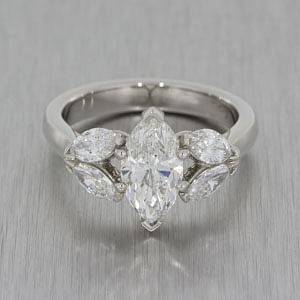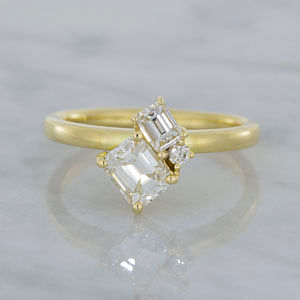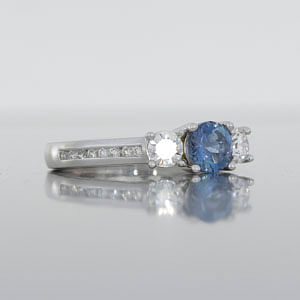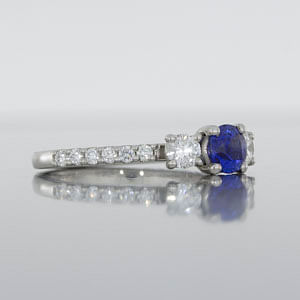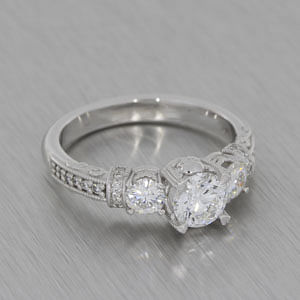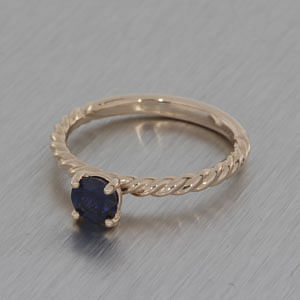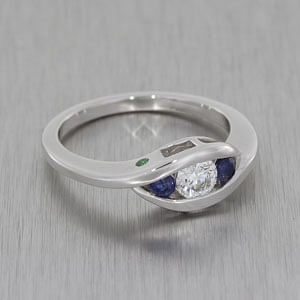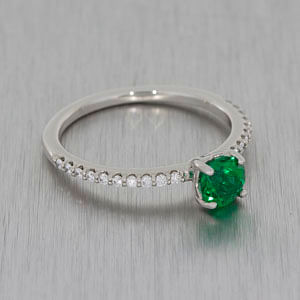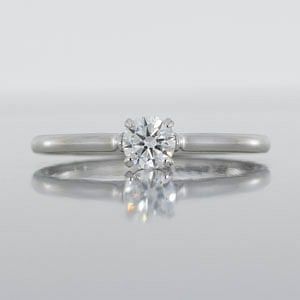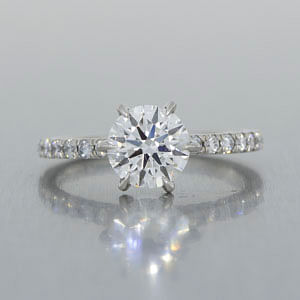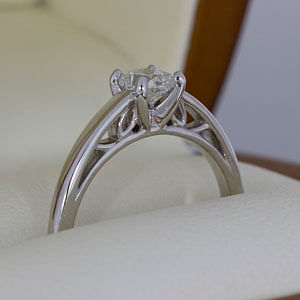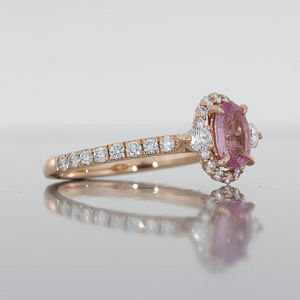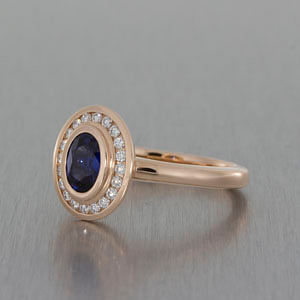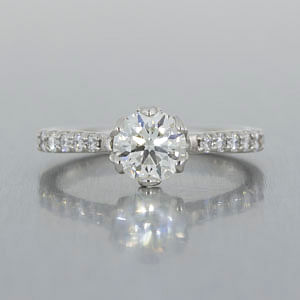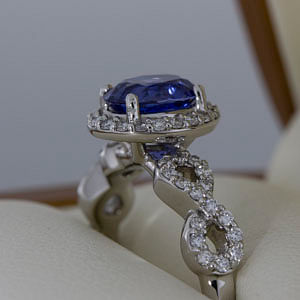Deciding on which metal to choose for your jewellery is a key decision in the process. Many factors have to be considered as all metals differ in their properties. We have broken down these factors for you.
Lifestyle
Lifestyle is a key element to considering when deciding, for example is the wearer has a more ‘hands on’ career then a more durable metal like platinum might be a good choice. It also comes down to personal taste, warmer colours are found in yellow and rose gold, while white gold and platinum have cooler tones.
Colours
Creating the perfect match between metal colour and gemstone colour is integral to your perfect piece. Consider whether you would like the colours to compliment one another such as white metal and white diamonds or whether you would prefer a contrast between the two.

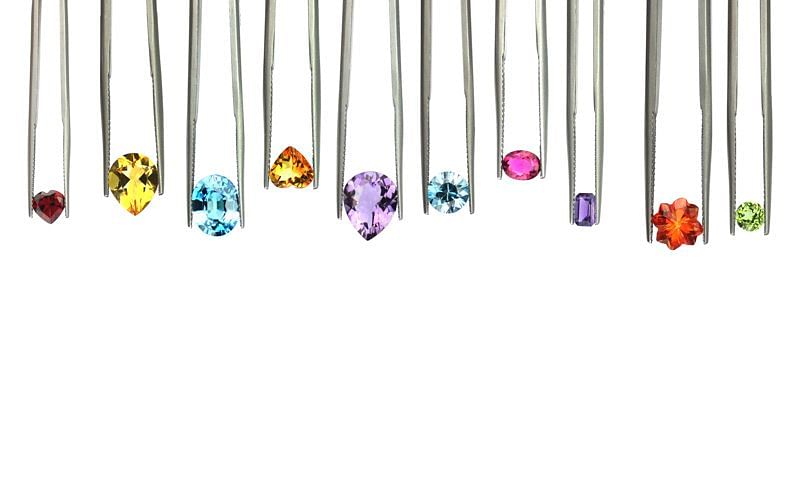
Style
Consider how large or refined you would like the ring to be overall. A ring with a lot of delicate detail will be best made in 18ct yellow or white gold due to how malleable these metals are the goldsmiths will be able to achieve an excellent finish. If you opt for a minimalist or finer design then platinum may be the best choice for its durability.
Price
Budget is another key factor in determining which metal to select for your design. If you have a particular budget in mind and you know you would prefer to prioritize spend on the gemstone(s) of your choice then a lower carat of gold might be the best choice for you. Metal prices do fluctuate and as all prices of mounts for engagement rings are dictated by weight, it is common that the price can fluctuate too.
Platinum
Platinum is a naturally white metal with a beautiful shine to it. It will not change colour with wear, but with wear, platinum will develop a soft patina (which can be polished out if you really want to!). Platinum is exceptionally dense, meaning it will feel weightier than gold. It is also the strongest of the precious metals we use making it a perfect match for holding large or valuable gemstones and making engagement and wedding rings.
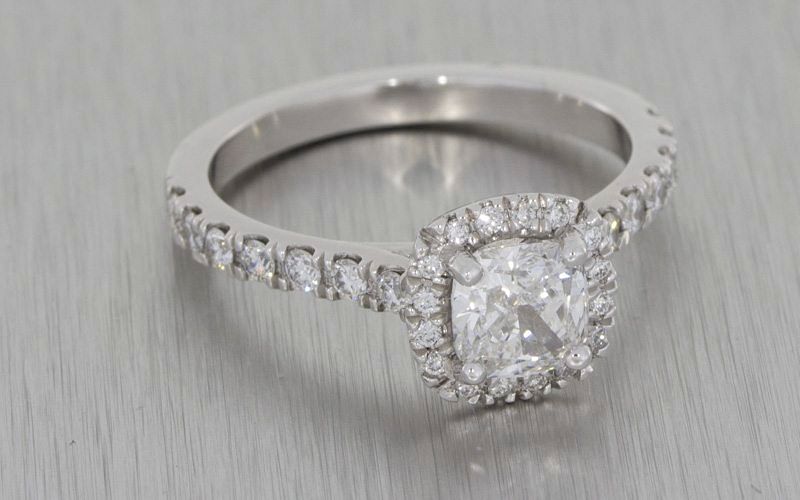
Pros
- Most durable metal available
- Great choice for everyday wear
- Natural white colour will always be preserved
- Hypoallergenic due to its purity
- Natural white colour compliments gemstones
Cons
- Might not be suitable for pieces of a substantial size or weight due to the metals high density
Care
All fine jewellery should be treated gently. In the case of Platinum, due to its high durability the metal will naturally keep its white lustre but over time a slight patina might develop on the surface of the metal which can always be polished by a professional jeweller to restore it back to its full lustre.
White Gold
White gold is made from an alloy of pure gold and white metals such as palladium, platinum and silver. Depending on the level of purity, white gold will appear warm white in colour (18ct, 75% purity) or very pale yellow (9ct, 37.5% purity). As standard all white gold jewellery is finished with a fine layer of rhodium plating which is cool white in appearance. Rhodium plating will thin with wear and you may choose to maintain it by re-plating your jewellery every so often. Gold is a wonderful metal for fine jewellery, it is durable (when 18ct-9ct) and it is malleable enough to create intricate and interesting jewellery.
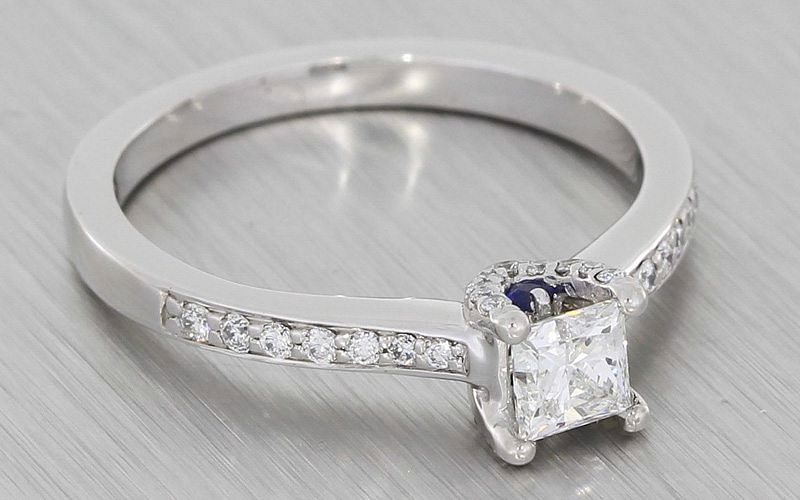
Pros
- A highly malleable material
- Easy to work with (resizing)
- Neutral colour wonderfully compliments all gemstones
Cons:
- White Gold is not quite a strong as Platinum
- With wear the rhodium plating will wear thin revealing the natural yellow hue of the gold
- The cost to re-rhodium plate accumulates over the years
Care
All fine jewellery should be treated gently. With wear the rhodium plating may wear off and reveal the warm hue of the white gold, you may therefore choose to re-plate your white gold jewellery every 12-18 months, depending on lifestyle.
Yellow Gold
Naturally yellow in colour with a beautiful shine, gold has been used to create jewellery for thousands of years. Engagement and wedding rings are made with gold alloys for strength, yellow gold alloys are made from pure gold, silver and copper. Depending on the level of purity, yellow gold will appear rich and warm in colour (18ct, 75% purity) or paler and cooler (9ct, 37.5% purity). Gold is a wonderful metal for fine jewellery, it is durable (when 18ct-9ct) and it is malleable enough to create intricate and interesting jewellery.

Pros
- Very classic
- Naturally yellow and will not change colour over time
- Easy to work with (Resizing)
- Malleable enough to create intricate jewellery
Cons
- A naturally soft metal
- Colour varies depending on carat
Care
Yellow gold over time will show wear in the form of a soft patina and small build up of scratches. You may choose to have your jewellery professionally re-polished from time to time to keep it looking it’s best.
Rose Gold
Rose gold (sometimes called red gold) is created by tweaking the proportions of copper in the alloy resulting in a beautiful warm colour. Engagement and wedding rings are made with gold alloys for strength, rose gold alloys are made from pure gold, silver and copper. Depending on the level of purity, rose gold will have a soft and subtle pink (18ct, 75% purity) or rosy and warm pink (9ct, 37.5% purity) appearance. Gold is a wonderful metal for fine jewellery, it is durable (when 18ct-9ct) and it is malleable enough to create intricate and interesting jewellery. Due to the higher proportions of copper in the rose gold alloy, rose gold is not hypoallergenic.
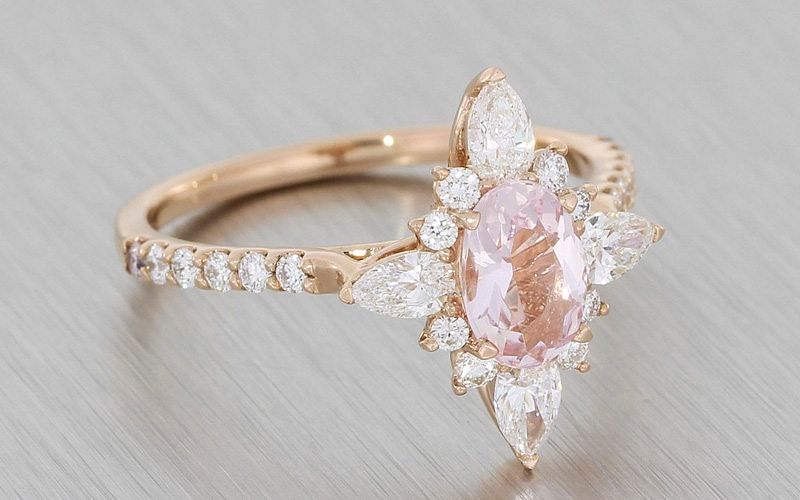
Pros
- More durable than yellow or white gold
- Warm pink colour retained over time
Cons
- Not hypoallergenic, due to copper alloy
- Colour varies due to carat
Care
Naturally rose gold will scratch due to everyday wear. Your lifestyle will dictate how frequently you will need to have your rose gold jewellery re-polished. Taking your piece to a professional jewellery for a clean and polish will bring your jewellery back to life.
Contemporary Metals
The Durham Rose Ethos is to create rings with superb quality and excellent value. While contemporary metals such as palladium and titanium can be popular due to their affordability the difference isn’t always worth the initial financial saving. Rings are designed to be worn on the hand and therefore need to be wearable, workable (in case of any future adjustments or maintenance), and removable (in case of accident or emergency). Contemporary metals such as titanium are very challenging to work with and the savings previously making palladium an attractive alternative are no longer applicable since the price of palladium has significantly risen.
What is Hallmarking?
Hallmarking is an official stamp of quality guaranteeing that you are getting the exact purity of metal that you have purchased.
Here at Durham Rose we send your pieces to the trusted Sheffield Assay office for certification and hallmarking. Other locations for hallmarking are in Edinburgh, London and Birmingham each represented differently in the hallmark by distinguishing symbols.
Hallmarking is a necessary process that all jewellery manufacturers are obliged to do and this is an important element of the production process that ensures quality and certifies the value of your ring. This is necessary for some insurance companies and for ring valuations.
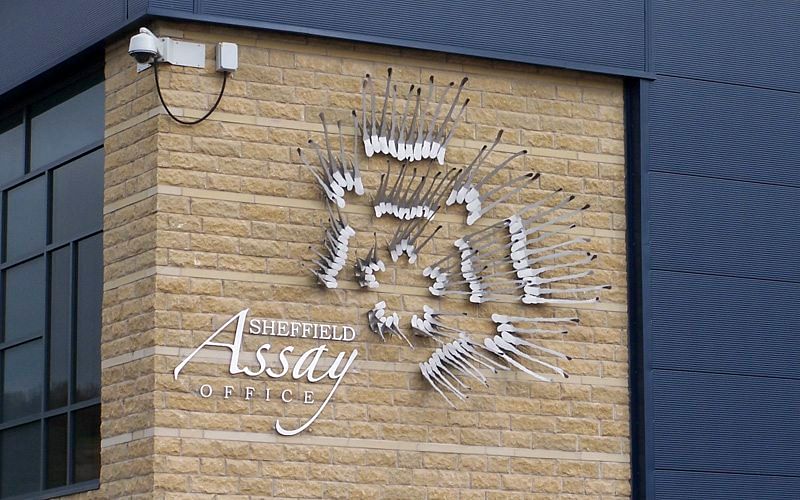

Understanding your Hallmark
Your ring will be marked with a number of symbols which are;
- Durham Rose Sponsor’s Mark: formally known as a Maker’s Mark
- The Standard Hallmark Mark: demonstrating the standard of finesse, i.e. the purity of the precious metal content in parts per 1000. For example, 18 carat gold is 750 parts per 1000 by weight
- The Assay Office Mark: showing which Assay Office tested and marked the item – we use the Sheffield Assay
- The Date Mark: defined by a stamped letter shows the year in which the article was hallmarked
This is what this information would look like on the inside of your piece;
AS SEEN IN





